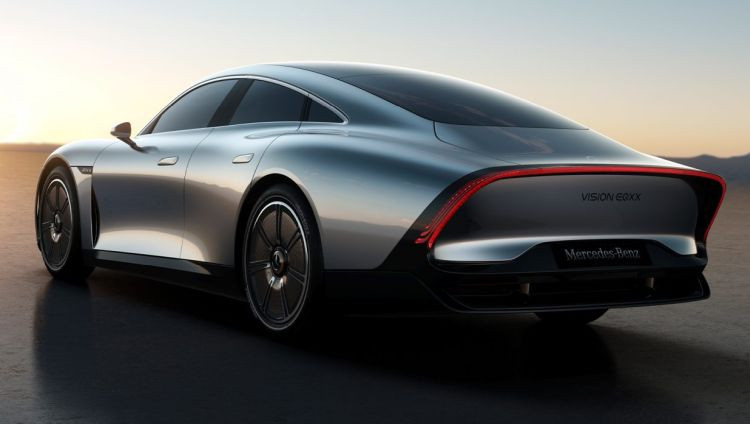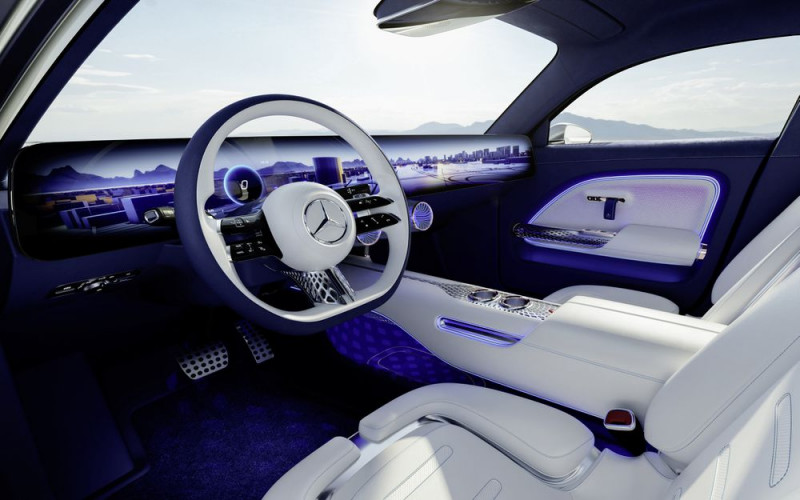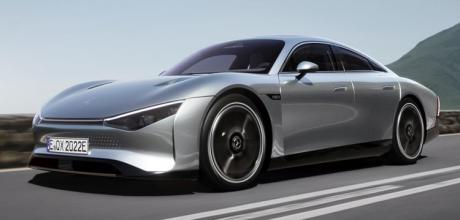2023 Mercedes-Benz VISION EQXX
Mercedes-Benz pulls out the stops for its most efficient concept car yet
In Mercedes’ words, its new Vision EQXX concept takes electric range and efficiency to an entirely new level. Think over 620 miles on a single charge, a record-breaking drag coefficient of 0.177Cd, and lightweight construction based upon the principals of sustainability. The EQXX also boasts a groundbreaking, 100kWh lithium-ion battery developed by Formula 1 experts at Mercedes-AMG High Performance Powertrains (HPP) in Brixworth, UK that is 50 per cent smaller and 30 per cent lighter than the battery found in the high-performing EQS.

Bolstering the electric range of the 1,750kg (gross) Mercedes concept are 117 solar cells on the roof, which support ancillaries including the air conditioning and infotainment, reducing demand on the battery. In combustion engine terms, the EQXX consumes the equivalent of just one litre of fuel per 100km (62 miles), achieving 282mpg. Meanwhile, its maximum system voltage is a super-high 900V (the EQS is 400V). The 20-inch magnesium wheels are wrapped in specially developed Bridgestone tyres and ensure minimal rolling resistance, and the power electronics (part of an electric drive unit housing the single electric motor and transmission) are based on those found in the soon-to-launch AMG Project One hypercar.
The EQXX’s body-in-white is made from low CO2 steel, derived completely from scrap metal. The doors are constructed from carbon and glass fibre reinforced plastics, and so-called BionEQXX casting and 3D-printed UBQ material made from a range of waste products are used for various structural components, achieving high strength and capping environmental impact.
The theme of sustainability continues inside where carpets are made from bamboo fibres, door straps are made from AMsilk Biosteel vegan fibre, and the two choices of upholstery – Deserttex and Mylo – are made from cactus fibres and mycelium fungus respectively. Conserving yet more energy is the redesigned heat pump, which uses ambient air and air from the drive system to warm the cabin.
Another first is ‘Neuromorphic computing’. Developed in collaboration with California-based BrainChip, the car’s computer systems have neural networks, which are vastly more energy efficient and responsive to voice input. The aim is for neuromorphic computing to be production ready in around five years. Game-engine processing and a collaboration with Sonatic to make the MBUX infotainment system more expressive and responsive is set to transform the user experience, too. It’s accompanied by 3D navigation on the 8K resolution LED display that stretches across the dashboard – easily the most immersive navigation display yet.

Come back next issue for a closer look at this astonishing Mercedes concept.
Rear floor extends backwards to reduce aerodynamic drag. Floating centre console; next-gen infotainment with AI.


